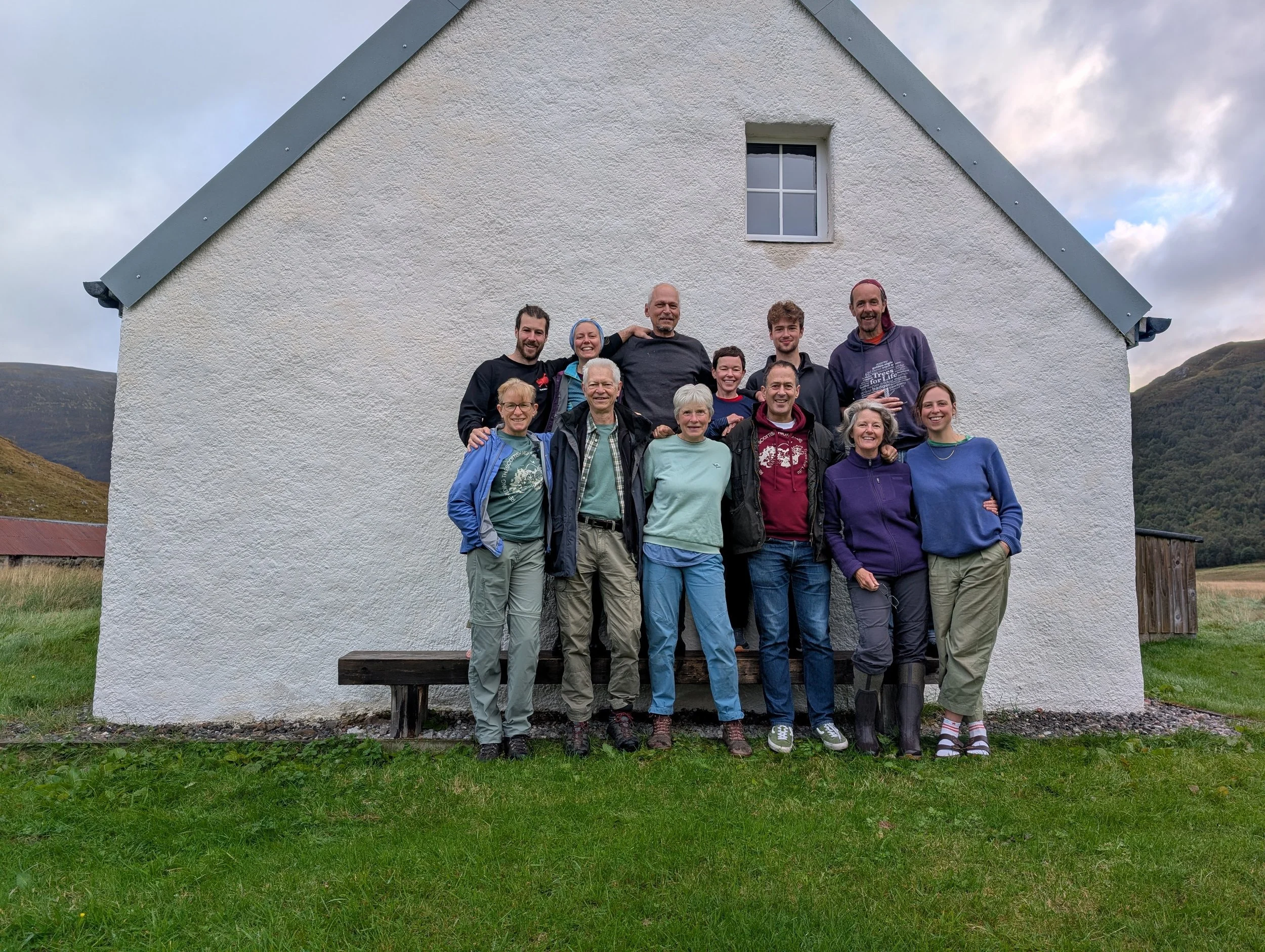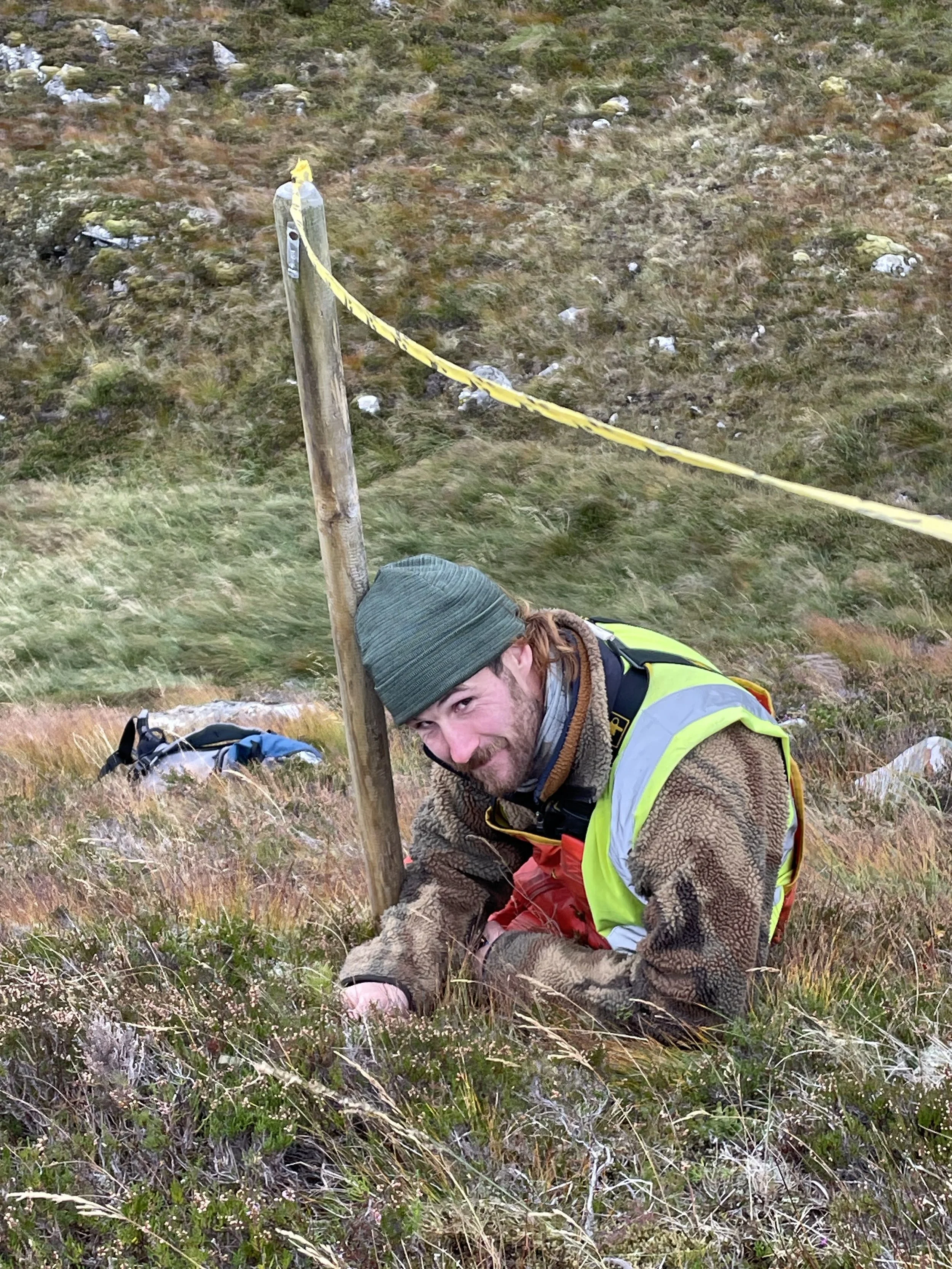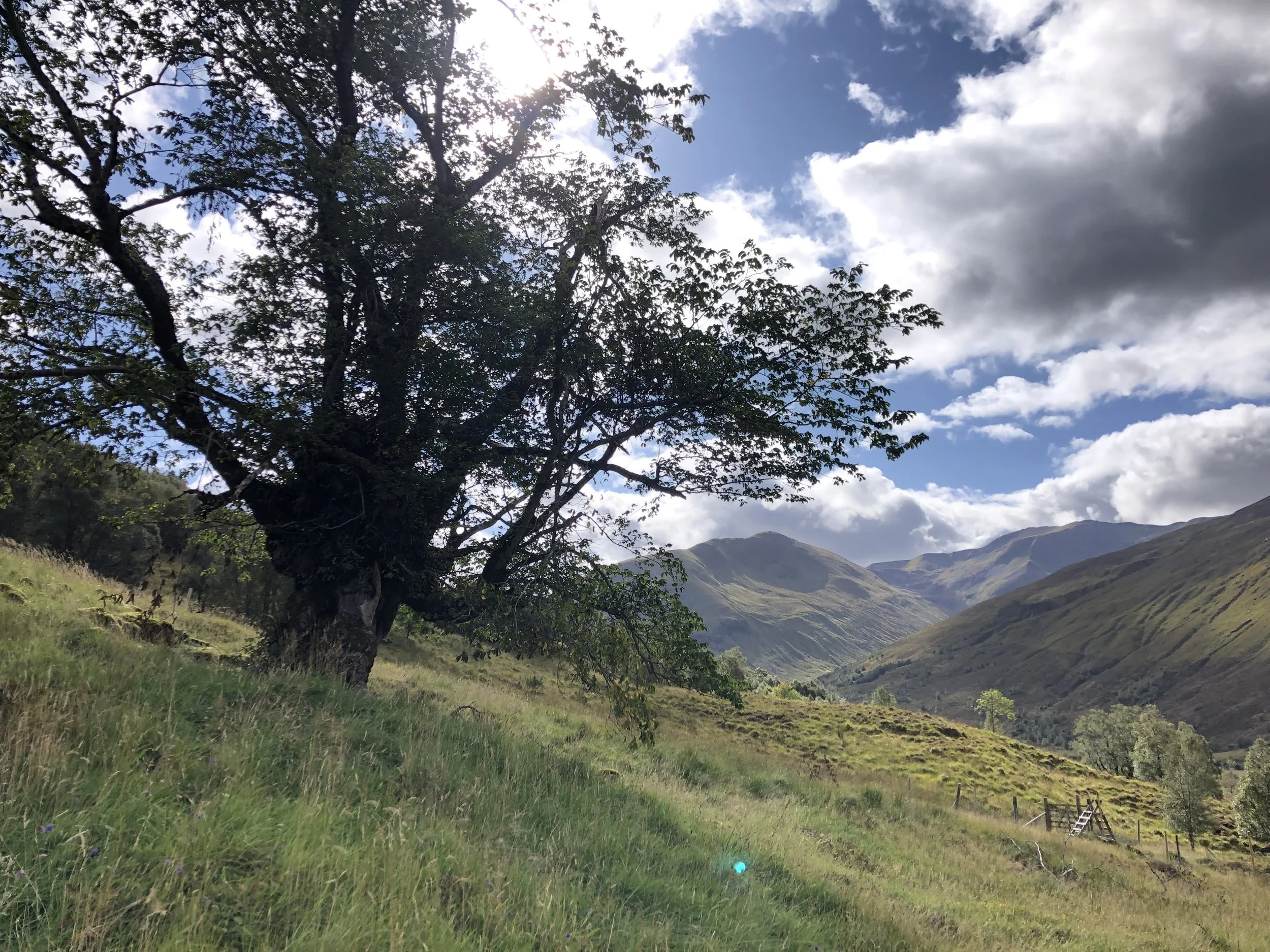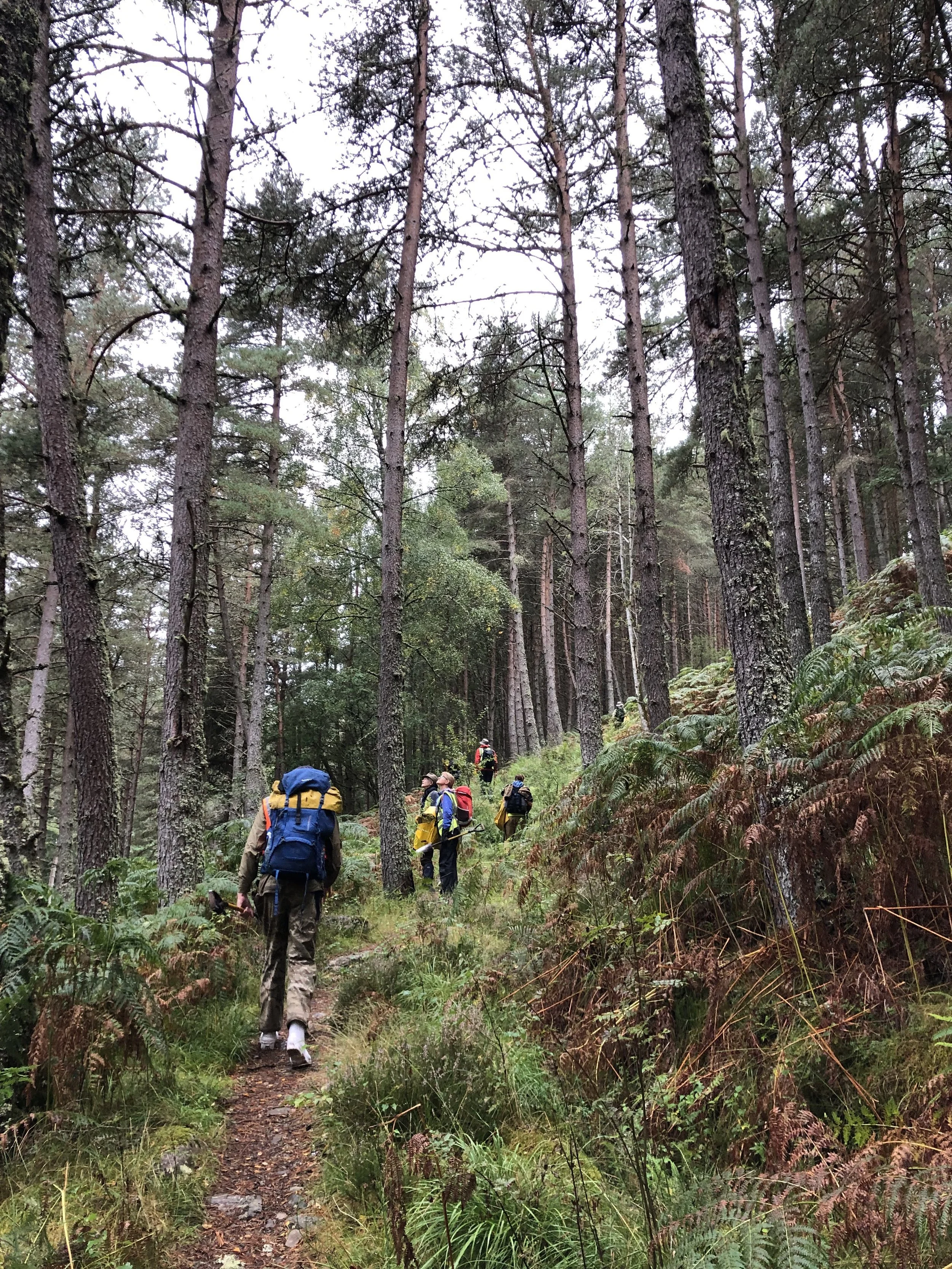Finnian’s Week with Trees for Life
Finnian Flood, Hometree’s Community Facilitator and Restoration Ranger, recently spent a week with Trees for Life, a registered charity working to rewild the Scottish Highlands.
I spent a fantastic week with Trees for Life in their Glen Affric project. I travelled to Scotland to take part in a volunteer week, with the aim of learning about their restoration practices, how they involve volunteers, and how we might improve our own volunteer offerings at Hometree.
We began the week at the mouth of Glen Affric, the site of Trees for Life’s first restoration project more than thirty years ago. There, they built a fence to exclude deer from the edge of an ancient woodland. It was incredible to see the amount of natural regeneration that can happen in such a relatively short time. It was also a wonderful way to start the week, giving us a glimpse of what our own work might look like in thirty years.
From there, we headed deeper into the valley to Athnamullach Bothy, our off-grid base for the week. The restored bothy was the perfect place to spend evenings cooking, recharging, and sharing the kinds of laughs that only come after long days of hard work at the edge of the world.
Each day brought a variety of tasks: planting trees, monitoring previously planted woodlands, and removing old fencing. We also had a day to ourselves to connect with nature however we chose. Some hiked the surrounding peaks (several of them) others swam in the loch (several times), while some simply sat beneath ancient trees. We also visited the nursery and visitor centre, and spent a day exploring beaver activity along a nearby river.
What I enjoyed most was the connection with the other participants. There’s a special kind of humour that comes after three hours crawling up a Highland slope on your hands and knees, searching for young saplings. Spending the week with curious, committed people was deeply rejuvenating, and the genuine love for the land shown by our guide, Dom, was infectious.
The most interesting part of the week for me was seeing a mature restoration effort. Watching the impact of deer fencing on natural regeneration, and witnessing the careful reintroduction of vulnerable species. Spotting tiny rowan seedlings pushing through sphagnum moss on steep slopes gave me hope for Hometree’s more remote sites.
The trip was also about learning how Trees for Life run their conservation and volunteering programmes. It was encouraging to see how much we have in common: both our weeks mix essential restoration work with education, reflection, and space to connect with each other and the land. The biggest difference is the setting. Trees for Life operate in the wilderness of the Highlands, while Hometree works on the edge of a village surrounded by farmland. Each reflects the landscapes and restoration challenges of our countries: Scotland with its vast wild places and debates about reintroducing large mammals, and Ireland with its patchwork of hedgerows, hidden ancient woodlands, and the challenge of weaving restoration into living agricultural communities. I feel that each site is a perfect setting for understanding and engaging in restoration work of each country.
Seeing beaver activity on the river was another highlight. Beavers were introduced to the river system 16 years ago. Seeing their lodges and activity was a reminder of how rich, interconnected, and unpredictable healthy ecosystems can be — and how human nature often seeks to make them neater than they really are.
Coming back from Scotland, I returned with new friends, new energy, and a renewed perspective on Hometree’s work. Dom often reminded us that this is a 250-year project. Restoration takes time, consistency, and patience. Whether working with habitats or communities, we can’t expect overnight change. But if we open our minds to a 250-year timeline, the possibilities are greater than we can imagine.
Special thanks to Dom Andrews and Heather McGowan for your energy, dedication and knowledge that you shared with us all throughout the week.






